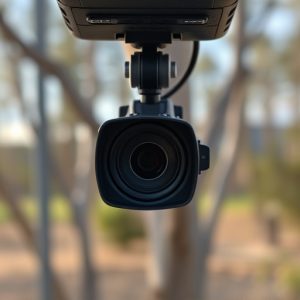Unveiling Hidden Lenses: Scanning Electromagnetic Signals for Spy Cameras
Battery-powered wireless spy cameras transform surveillance with their flexible, battery-driven desi…….
Battery-powered wireless spy cameras transform surveillance with their flexible, battery-driven design, offering discreet monitoring for homes and professionals without complex wiring. Their compact size, high-quality video, and wireless transmission enable easy placement in hard-to-reach areas, while continuous operation on simple batteries makes them ideal for temporary or limited-access locations. Electromagnetic signal scanning technology detects their RF signals, aiding security experts in identifying hidden cameras. In today's digital era, this advanced method is crucial for privacy protection in high-risk environments and governed by legal frameworks to ensure ethical use of battery-powered wireless spy cameras.
Uncover the insidious world of hidden surveillance with our comprehensive guide on electromagnetic signal scanning. We explore the intricate details of battery-powered wireless spy cameras, delving into the science behind detecting their subtle EM signals. Learn effective strategies to uncover these clandestine devices and understand the ethical and legal implications. Navigate the complex landscape of privacy invasion and empower yourself with knowledge in this modern age of hidden lenses.
- Understanding Battery-Powered Wireless Spy Cameras
- The Science Behind Electromagnetic Signal Scanning
- Detecting Hidden Cameras Using EM Signals
- Ethical Considerations and Legal Frameworks
Understanding Battery-Powered Wireless Spy Cameras
Battery-powered wireless spy cameras are a discrete and modern take on surveillance technology, offering remote monitoring capabilities with the convenience of being powered by a simple battery source. These innovative devices eliminate the need for complex wiring, making them ideal for various applications—from home security to professional surveillance. Their compact design allows for easy placement in hard-to-reach or hidden areas, ensuring unobtrusive observation while capturing high-quality video and images.
Understanding how these cameras operate is essential when employing them as part of a scanning guide. Typically, they utilize wireless transmission technology, such as Wi-Fi or cellular networks, to send data to a connected app on your smartphone or computer. The battery powers the camera’s operations, including image/video capture and wireless communication, ensuring continuous monitoring without requiring an external power source. This feature makes them particularly versatile for temporary installations or situations where access to traditional power outlets is limited.
The Science Behind Electromagnetic Signal Scanning
The process of electromagnetic signal scanning involves detecting and analyzing radio frequency (RF) signals, which are integral to modern technologies like Battery Powered Wireless Spy Cameras. These cameras operate by transmitting video data wirelessly, creating invisible yet powerful RF signals that carry visual information. The science behind this technology leverages the fact that electromagnetic waves travel through various materials, including walls, allowing for remote surveillance without physical intrusion.
Specialized equipment, designed to capture and interpret these signals, forms the core of electromagnetic signal scanning. This technology enables users to detect active wireless devices, ensuring security by identifying potential hidden cameras or unauthorized tracking devices. By understanding the principles of RF communication, experts can develop advanced systems that pinpoint the source of electromagnetic signals, offering a critical tool for privacy protection and comprehensive security solutions.
Detecting Hidden Cameras Using EM Signals
Detecting hidden cameras has become a critical aspect of privacy and security in today’s digital age, especially with the proliferation of battery-powered wireless spy cameras. These tiny, often indistinguishable devices can be concealed almost anywhere, posing significant risks to personal and professional spaces. Electromagnetic (EM) signal scanning offers an innovative solution for identifying these covert devices.
By utilizing specialized equipment to detect EM signals emitted by hidden cameras, security professionals can uncover surveillance equipment that might otherwise go unnoticed. These signals, often overlooked, provide a unique signature that can be traced back to the camera’s source. This non-invasive method is particularly effective in high-risk areas like government facilities, corporate boardrooms, and residential properties, ensuring peace of mind without causing any physical damage or disruption.
Ethical Considerations and Legal Frameworks
In the realm of hidden lens electromagnetic signal scanning, ethical considerations and legal frameworks play a crucial role in guiding responsible use, especially with the proliferation of battery-powered wireless spy cameras. As technology advances, it’s essential to navigate the balance between innovation and privacy protection. Unethical or illegal deployment of such devices can lead to severe consequences, including invasions of privacy, data breaches, and even criminal activities.
Legal frameworks worldwide have started to address these concerns by implementing regulations that govern the use of hidden cameras. These laws often require explicit consent for surveillance, limit the collection and storage of personal data, and mandate transparency in data handling practices. Users of battery-powered wireless spy cameras must stay informed about these legal requirements to ensure their activities remain within ethical and legal boundaries.
The hidden lens electromagnetic signal scanning guide illuminates a powerful tool for navigating the intricate world of battery-powered wireless spy cameras. By harnessing the science behind electromagnetic signal scanning, individuals can now detect these elusive devices, raising awareness and promoting ethical use within legal frameworks. This knowledge empowers users to protect their privacy and security in today’s digital era.


